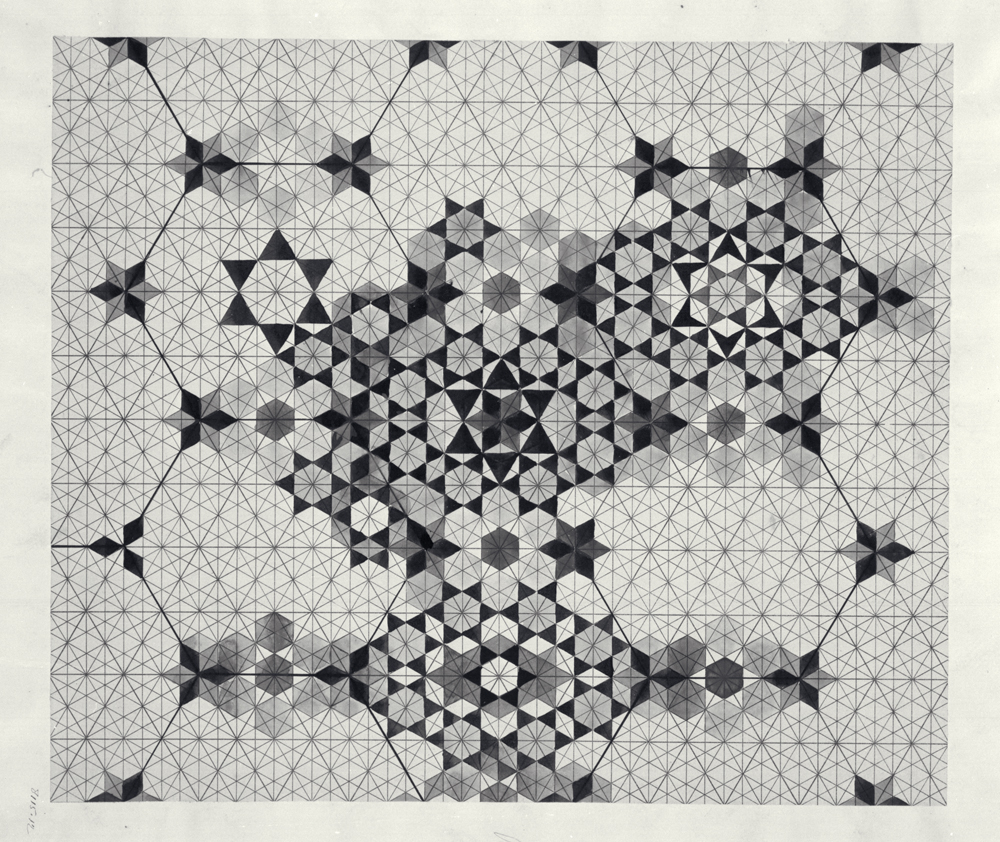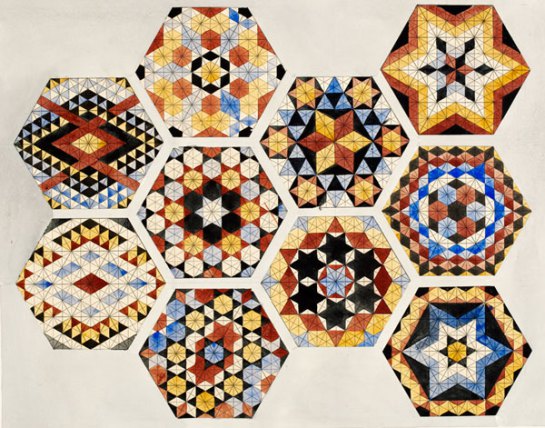I recently met with a friend for coffee and while we were talking about a new rosette that I had recently posted photos of, she asked me in a general sort of way, “what do these rosettes mean?” I often lose perspective during the innumerable hours that I spend thinking about and making these tiny things, that I forget how little any normal person even notices them. So, I thought that it might be interesting to give more of an explication of the current rosette that I’m working on in addition to the usual pictures. I’d eventually like to write more of an in-depth article about the broader subject of marquetry in musical instruments, but that will have to remain a long-term goal for now.
The rosette that I’m working on at the moment was designed by the famous Spanish guitar maker José Romanillos. It’s one of the more iconic and it easily recognizable rosettes I’ve ever seen. I grew up studying the classical guitar and I honestly never paid much attention to how any guitar looked, but I remember this rosette striking me immediately; I would check out VHS tapes from the library of Julian Bream performing and I remember thinking about how unusual and beautiful the rosette on his guitar looked.
Like many rosettes, it consists of a interior band made up of a repeating mosaic pattern. It’s the visual focus of the rosette and sometimes even pictorial. The two surrounding bands are almost always symmetrical and feature a series of veneer lines and sometimes a more subtle and abstract marquetry pattern. The Romanillos rosette is no exception. However, the technique is unusual and creates a striking result.
It consists of a series of columns and horseshoe arches (also known as Moorish arches). It was inspired by the Muslim prayer hall in the famous Mosque or Mezquita-Cathedral in Cordoba, Spain. In the 8th century CE under Abd ar-Rahman, the Umayyad Caliphate expanded through much of Iberia, including the Visigoth Kingdom where the Emirate of Cordoba was subsequently established. The current structure of the mosque is, supposedly, built in place of what once was church where both Christians and Muslims worshiped. It’s believed that Abd ar-Rahman purchased the christian portion, leveled the whole structure and built the giant mosque in its place. The mosque has since been converted into a Catholic church and Muslims are currently barred from worshiping inside it. As a person with no official religious affiliations, I find it interesting and beautiful in an historic and artistic sort of way.
The outer rings of my current version of this rosette feature a few simple lines of rosewood, sycamore, walnut and padouk. Romanillos was quite vocal about his aversion to artificially dyed woods, so I don’t use any in trying to keep with the spirit. His rosettes in the 70’s were narrower and eventually grew to over 20mm wide in the 80’s and 90’s with more elaborate herringbone and lozenge motifs in the outer rings. I like to keep my rosettes at a maximum of 19mm these days as I feel that they start to look cumbersome beyond that.
Anyway, that is a brief explanation the Romanillos rosette. I’ve included some photos through the process as well as some of the Mezquita-Cathedral. For interested woodworkers, Romanillos explains and documents much of the building process in his recently published book which you can purchase from him and his wife Marian directly.





























































































